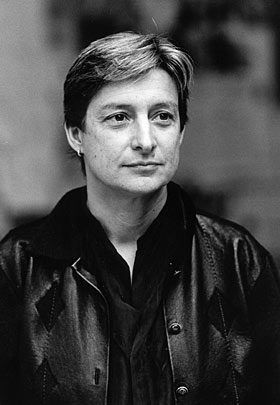 A small symbol, but a big deal. Last weekend, Facebook Inc. updated its architecture to better represent users who marry same-sex partners. Until this point, a relationship status of “married” was ubiquitously accompanied by a cake-topper-like icon of a man and a woman.
A small symbol, but a big deal. Last weekend, Facebook Inc. updated its architecture to better represent users who marry same-sex partners. Until this point, a relationship status of “married” was ubiquitously accompanied by a cake-topper-like icon of a man and a woman.
Now, users can select a male-female, female-female, or male-male icon to digitally represent their matrimony. I want to take this occasion to briefly discuss what it means to construct a self via template, and question the extent to which the binds of templated identity construction are more (or less) severe than general practices of categorization.
It is axiomatic to note that social network sites are spaces of self and identity construction. Through them we present versions of the self, receive feedback from others, recapitulating our histories, documenting the present, and shaping who we shall become. Social network sites, however, are not blank canvases on which users freely write themselves into being. Rather, they are templated architectures through which users (re)formulate experience in an externally determined pattern. If the social network site is both a window and mirror, our experiences must fit within these patterns, lest the image appears warped.
In the case of the Facebook marriage icon, those who reported entering into same-sex unions were, until last week, required to represent said union with heteronormative imagery. They had to warp their experiences to fit the template, or warp their digital representations by omitting (an arguably central) part of their lived experiences.
In short, templated identity construction is quintessentially categorical, and categories are necessarily exclusive. Categories are bounded and binding. These binds shape how we present ourselves, how we think about each other, how we understand our lived experiences, and how we will behaviorally proceed in the future. To live in a categorically organized world that fails to account for one’s lived experience, can be a real form of violence against the self. Templated media offer a mere selection of existing categorizations, narrowing further the tools with which to portray and enact the self.

Certainly, Facebook’s addition of same-sex icons is an important move towards inclusivity, providing more effective tools with which users can present and enact the self. Similarly, a write-in gender option (rather than the current binary male/female options) would be a logical next step in the direction of inclusivity. However, each addition of a new category—or a new templated tool of representation— reminds us of the lived experiences that do not fit, highlighting the problem of categorization that so many post-modern theorists lament.
This all leads me to a final question: Do templated spaces of identity construction necessarily do violence to experience—narrowing an already binding system of categorization—or are they simply material manifestations of extant categorical binds—made less powerful and less destructive by their explicitness and concomitant visibility?

Comments 5
atomic geography — July 10, 2012
I don't thinkthe options of your duality/question are mutually exclusive. That is, both states can and do exist simultaneously even if the construction of the question appears to negate that. That is to say, the process of categorization both allows fuctionality and possibility, and excludes and constrains.
For what's it's worth, I've referred to this state as All Pervasive Queerness. http://atomicgeography.com/2012/03/12/all-pervasive-queerness/
Of Interest to Character Conception in Fiction: Templated Identity Construction | Cyborgology | Cinematic Narrative | Scoop.it — July 10, 2012
[...] …templated identity construction is quintessentially categorical, and categories are necessarily exclusive. Categories are bounded and binding. These binds shape how we present ourselves, how we think about each other, how we understand our lived experiences, and how we will behaviorally proceed in the future. To live in a categorically organized world that fails to account for one’s lived experience, can be a real form of violence against the self. Templated media offer a mere selection of existing categorizations, narrowing further the tools with which to portray and enact the self. [...]
Of interest to Character Conception in Fiction: Templated Identity Construction | Cyborgology | Narrative: Some Issues and Examples | Scoop.it — July 10, 2012
[...] …templated identity construction is quintessentially categorical, and categories are necessarily exclusive. Categories are bounded and binding. These binds shape how we present ourselves, how we think about each other, how we understand our lived experiences, and how we will behaviorally proceed in the future. To live in a categorically organized world that fails to account for one’s lived experience, can be a real form of violence against the self. Templated media offer a mere selection of existing categorizations, narrowing further the tools with which to portray and enact the self. [...]
In Their Words » Cyborgology — July 15, 2012
[...] “Do templated spaces of identity construction necessarily do violence to experience?” [...]